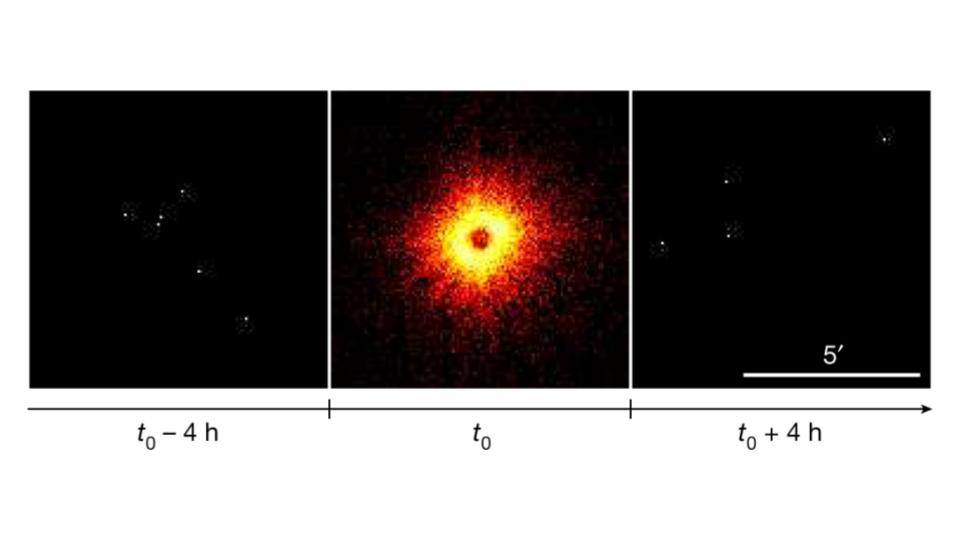
One of the recurring themes in this show – and in the universe – is stellar cannibalism. As we’ve said before, it is a star-eat-star world out there. Exactly what happens when one star gravitationally pulls material off its companion depends on the mass of the cannibal. If it is a black hole, we get an amazing light show as material works its way past the event horizon.
On the other end of the mass spread, a hungry white dwarf can carry that extra mass in a lot of different ways. If it feeds just right, it will slowly add weight, building up its bulk over time, until one day it explodes as a type 1a supernova.
Other stars, with a different feeding pattern, will build up material on their surface, crushing it in place, until one day that surface material gets dense enough that it goes off in a layer of thermonuclear reactions. This kind of surface explosion can occur over and over as a white dwarf repeatedly flares up in what is called a classical nova.
Classical novae are a favorite target for amateur astronomers who will monitor their favorites and report their flare-ups to organizations like the American Association of Variable Star Observers (AAVSO). This ‘have they / haven’t they gone’ flare is one of the scientifically frustrating and observationally fun characteristics of these unpredictable stars.
And it was entirely by accident that researchers happened to be pointing the eROSITA instrument on the Spectrum-Roentgen-Gamma mission at a classical nova a few hours before it flared into visible brightness. At that random moment, researchers caught the white dwarf shining brightly in X-rays. A few hours earlier, this area of the sky was boring. A few hours later, boring again… in X-ray. As I said, it had a visible nova event. It had long been theorized that in the leadup to the nova event, X-ray light might be released as reactions begin, but this light is only released briefly and had never before been seen.
This work is published in Nature in a paper led by Ole König, who explains that this observation: …was to some extent a fortunate coincidence, really. These X-ray flashes last only a few hours and are almost impossible to predict, and the observational instrument must be pointed directly at the explosion at exactly the right time. …We were really lucky.
I love this result. There was a theory. We couldn’t confirm it without getting super lucky, but one day the universe decided, “You know, these folks deserve some good data.” And provided us with exactly what was needed to say, “Yes, we are on the right track to understanding these cannibal stars that like to explode the material they eat.”
More Information
FAU press release
“X-ray detection of a nova in the fireball phase,” Ole König et al., 2022 May 11, Nature




 Join the Crew!
Join the Crew!
 Escape Velocity Space News
Escape Velocity Space News
0 Comments